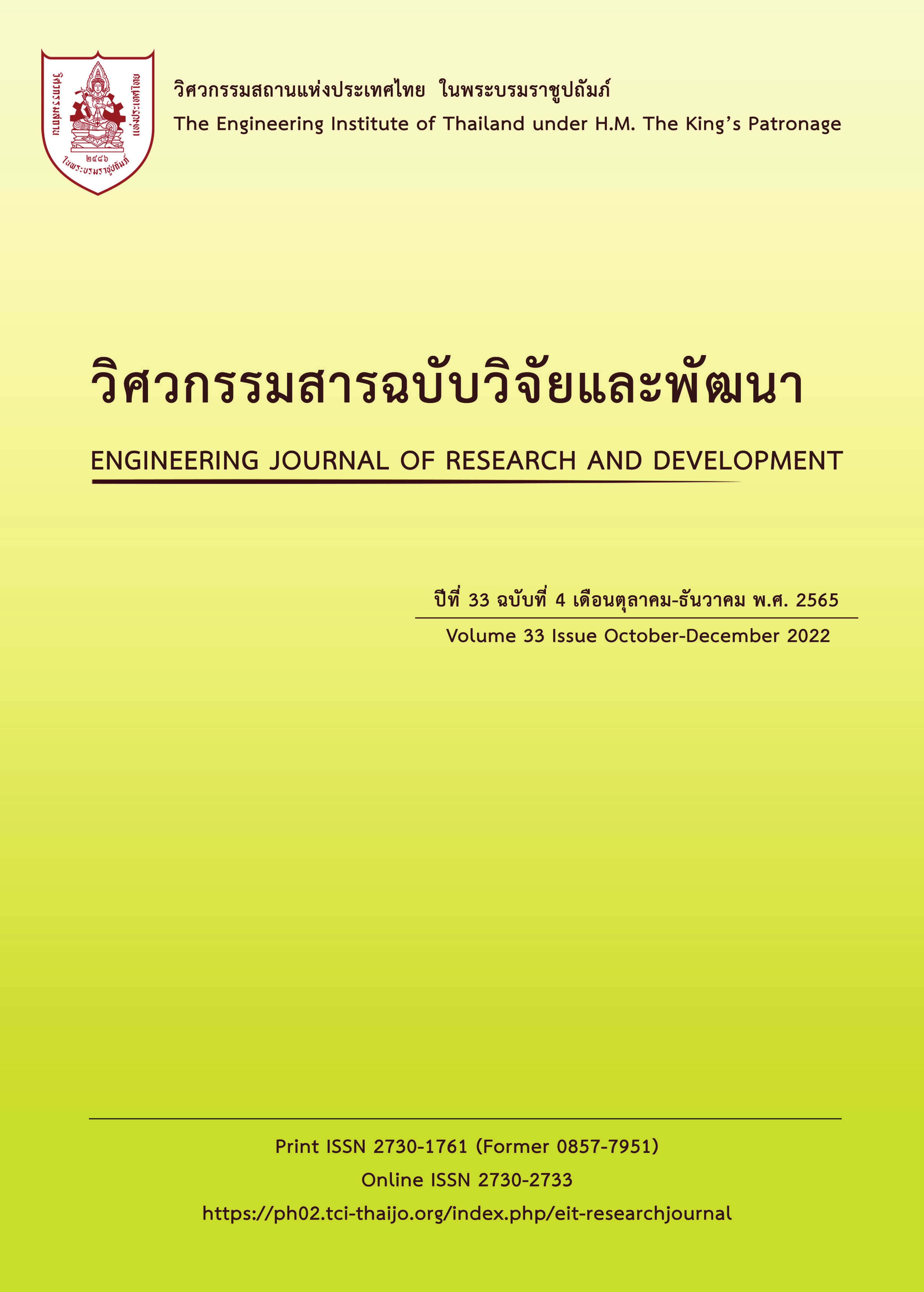TREATMENT OF GASEOUS FORMALDEHYDE IN A CLASSROOM OF ANATOMY BUILDING USING OZONATION WITH THE APPLICATION OF CENTRAL COMPOSITE DESIGN MODEL
Main Article Content
Abstract
The objective of this research was to investigate the optimal treatment condition; ozone dosage and fan speed of the air purifier, and the removal efficiency of gaseous formaldehyde in the SY105 classroom of Anatomy building, College of Medicine and Public Health. The Central Composite Design (CCD) model was applied for experimental design. Treatment conditions studied include ozone dosage rate (700 mg/hr, 1,100 mg/hr, and 1,500 mg/hr) and air blower speed (1.12, 1.58, and 2.04 m/s). The results showed that at the ozone dosage rate of 1,500 mg/hr and the air blower speed of 2.04 m/s, the highest removal efficiency of gaseous formaldehyde (62.45±2.07%) was obtained. These conditions were also found to be the optimal condition yielding the most effective treatment of gaseous formaldehyde with ozonation using the package Design Expert V. 13.
Article Details

This work is licensed under a Creative Commons Attribution-NonCommercial-NoDerivatives 4.0 International License.
The published articles are copyright of the Engineering Journal of Research and Development, The Engineering Institute of Thailand Under H.M. The King's Patronage (EIT).
References
Bangon Changsap, B. The near dangers: formaldehyde/formalin. Huachiew Chalermprakiet Science and Technology Journal, 2015, 1(1), pp. 97-109.
Kumar, P.A. et al. Hexavalent chromium removal from wastewater using aniline formaldehyde condensate coated silica gel. Journal of Hazardous Materials, 2007, 143, pp. 24-32. DOI: 10.1016/j.jhazmat.2006.08.067
Tejado, A. et al. Physico-chemical characterization of lignin from different sources for use in phenol-formaldehyde resin synthesis. Bioresource Technology, 2007, 98(8), pp. 1655-63. DOI: 10.1016/j.biortech.2006.05.042. Epub 2006 Jul 14. PMID: 16843657.
Wanfan, S. Knowledge of formaldehyde: Nearby hazardous substance, 2013. Available from http://www.thailandindustry.com/indust_newweb/articles_preview.php?cid=19310 [Accessed 10 October 2021].
Arts, J.H.E. et al. Inhaled formaldehyde: Evaluation of sensory irritation in relation to carcinogenicity. Regulatory Toxicology and Pharmacology, 2006, 44, pp. 144-160. DOI: 10.1016/j.yrtph.2005.11.006
Department of Labour Protection and Welfare, Announcement of Department of Labour Protection and Welfare: Total Threshold Limits Concentration of Hazardous Chemicals. Bangkok, 2017. Available from http://cste.sut.ac.th/csteshe/wp-content/lews/Law28.pdf [Accessed 5 May 2021].
Dechapanya, W and S. Nontula, Treatment of gaseous formaldehyde with continuous source in a closed modeling room using ozonation. Thai Environmental Engineering Journal, 2017, 31(1), pp. 37-43.
Horvath, M. et al. Ozone (Topics in Inorganic & General Chemistry), 1st ed. Amsterdam, Netherlands: Elsevier Science Ltd., 1985.
Primozone. Natures own disinfection method, 2021. Available from https://www.primozone.com/technology/why-ozone/ [accessed 25 November 2021].
Srithai, T. et al. Formaldehyde treatment with ozone in anatomy classroom. Journal of Energy and Environment Technology, 2021, 8(2), pp. 12-22.
Chanpirak, A. et al. Optimization of oil extraction from spent coffee grounds (coffea canephora var. robusta/coffea arabica) by hexane using response surface methodology. The Journal of KMUTNB, 2018, 28(4), pp. 799-811.
Dechapanya, W. and Nontula, S. Creation design and removal efficiency study of prototype of reactor for treatment of formaldehyde using ozonation. Final Report, Ubon Ratchathani University, 2020.
Tseng, C.H. et al. The removal of indoor formaldehyde by various air cleaners, In: the 98th A&WMA annual conference, Minneapolis, MN, USA, 21-24 June 2005, pp. 457-469.


